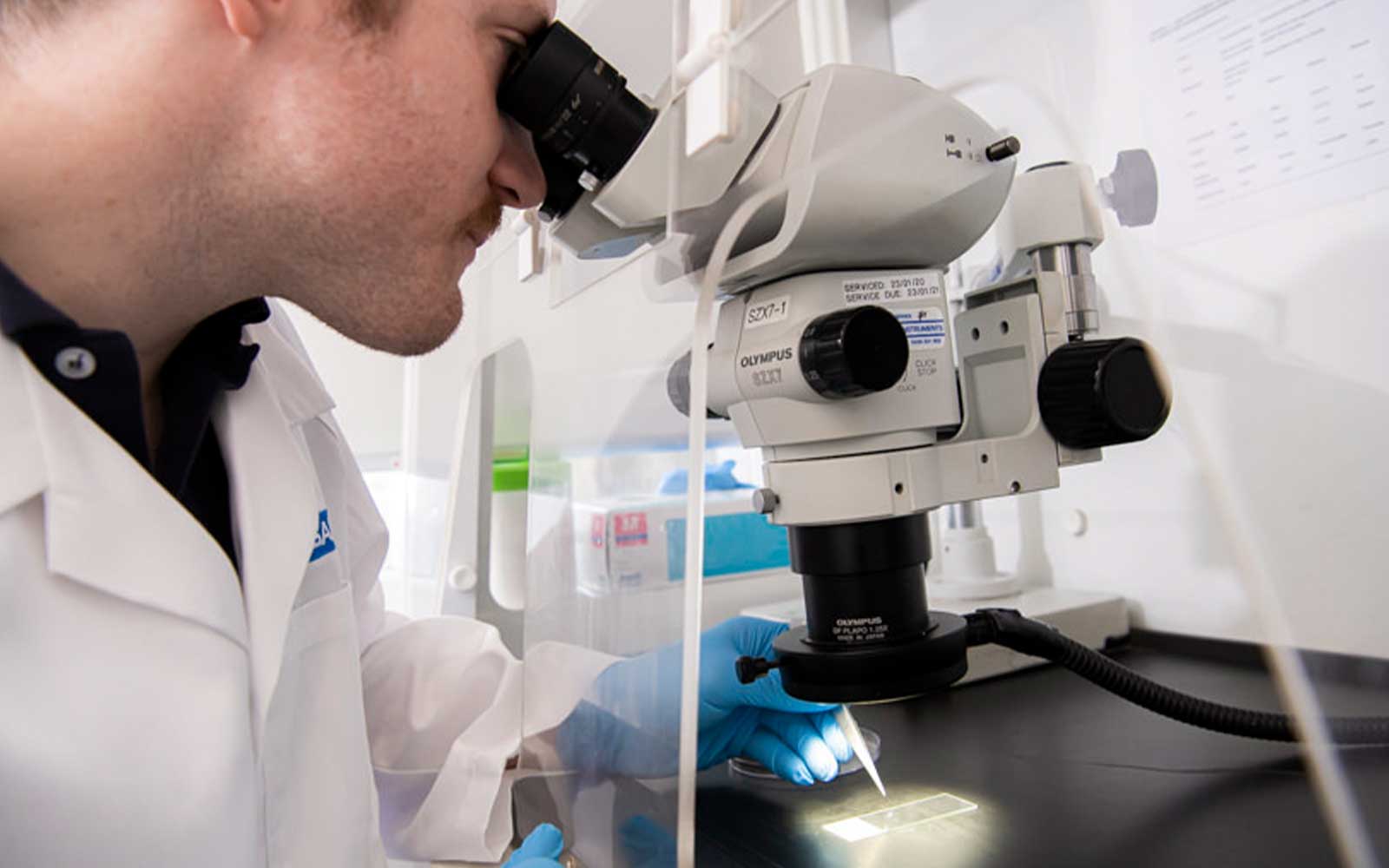Top-Rated Asbestos Testing: Secure Your Family from Harmful Direct Exposure
Top-Rated Asbestos Testing: Secure Your Family from Harmful Direct Exposure
Blog Article
The Total Process of Accredited Asbestos Checking to Ensure Home Compliance
In the world of residential or commercial property administration and compliance, the procedure of accredited asbestos screening stands as a critical element to make sure the safety and health of passengers. Understanding the intricate steps associated with this testing procedure is extremely important for homeowner and managers alike. From the initial analysis to the final analysis of results, each stage plays a vital function in figuring out the existence of asbestos within a residential property. Let's discover just how this thorough procedure unravels to ensure adherence to strict regulations and safeguard against potential carcinogen.
Accredited Asbestos Testing: Initial Assessment
In carrying out the initial assessment for recognized asbestos screening, a thorough evaluation of the home's materials is important to accurately identify potential asbestos-containing materials. Unique focus is given to products that are prone to damage or disruption, as these situations can release harmful asbestos fibers right into the air.
Recognized asbestos assessors follow stringent methods established by governing bodies to guarantee the precision and reliability of the testing process. By thoroughly documenting searchings for and using innovative testing approaches, assessors can offer homeowner with a thorough report describing the presence of asbestos, if any, and the suggested actions for reduction or elimination. This initial assessment sets the structure for succeeding activities to attend to asbestos worries and make sure the safety and compliance of the residential property.
Example Collection Procedures for Asbestos Examining
Reliable sample collection procedures are important in ensuring accurate asbestos testing results and conformity with regulatory criteria. When accumulating samples for asbestos screening, it is essential to comply with rigorous procedures to minimize the risk of contamination and make sure the dependability of the outcomes.
First of all, it is essential to recognize the believed asbestos-containing products (ACMs) and prioritize tasting areas based on aspects such as the product's problem, ease of access, and capacity for disturbance. Asbestos Testing. Samples should be collected from different locations within the building to provide a thorough assessment of asbestos existence
During sample collection, licensed experts must wear proper individual safety devices (PPE) to protect against asbestos exposure. They should use clean devices, such as disposable handwear covers and plastic sheeting, to stop cross-contamination in between examples. Examples should be carefully gathered making use of a defined method, such as wet wiping or coring, and securely secured in airtight containers to protect their stability throughout transport to the laboratory for analysis.
Laboratory Evaluation Process for Asbestos Samples
Upon conclusion of the example collection procedure, the asbestos examples are this website diligently carried to recognized laboratories for precise evaluation. At the laboratory, educated service technicians manage the examples with extreme care to stop any type of cross-contamination or sample deterioration. The very first action busy analysis procedure is example prep work, where the gathered examples are very carefully refined to draw out the asbestos fibers. Asbestos Testing. This step is crucial to make sure accurate lead to the subsequent analysis.

When the analysis is complete, a comprehensive record is generated, detailing the findings and verifying whether asbestos is from this source present, the kind of asbestos fibers determined, and the focus degrees. This info is important for homeowner to take the needed actions to make certain conformity with asbestos laws and safeguard the health of residents.

Coverage and Analysis of Asbestos Test Results
Approved asbestos testing labs give thorough reports that provide essential insights right into the visibility, type, and focus degrees of asbestos fibers found in samples collected from properties. These records are crucial for building owners and managers to comprehend the threat postured by asbestos and make educated choices regarding its management or elimination. The records generally include info on the approaches made use of for testing, the areas where samples were taken, the sort of asbestos recognized (such as chrysotile, amosite, or crocidolite), and the focus levels of asbestos fibers spotted.
Translating these results needs proficiency to evaluate the potential health dangers linked with asbestos direct exposure, determine the proper program of action, and make sure regulative compliance (Asbestos Testing). Depending on the findings, suggestions may range from proceeded tracking and upkeep to encapsulation or complete asbestos reduction. Homeowner need to thoroughly assess these records and seek advice from asbestos experts to establish a thorough strategy for resolving any type of asbestos problems determined
Making Sure Property Compliance With Asbestos Laws
To keep adherence with asbestos guidelines, building proprietors should carefully apply procedures to make sure conformity with appropriate laws and click this link standards. Once asbestos is determined, building owners need to adhere to asbestos management intends that overview proper control, elimination, or encapsulation treatments to avoid direct exposure and spread of asbestos fibers.
Homeowner should give asbestos awareness training to staff members and owners to reduce the risk of asbestos direct exposure and make sure appropriate handling of materials that might consist of asbestos. Furthermore, it is crucial to stay informed about any type of updates or modifications in asbestos regulations to adjust administration techniques as necessary. By proactively addressing asbestos compliance requirements, home owners can produce a risk-free setting for owners and alleviate potential legal and health dangers related to asbestos direct exposure.
Conclusion
In verdict, approved asbestos screening is a critical process for ensuring property compliance with regulations. The first analysis, example collection treatments, research laboratory evaluation, and analysis of results are all crucial action in this process. By complying with these treatments, home proprietors can determine and deal with any kind of asbestos risks existing, protecting the health and wellness and safety of owners and keeping compliance with regulative demands.
Report this page